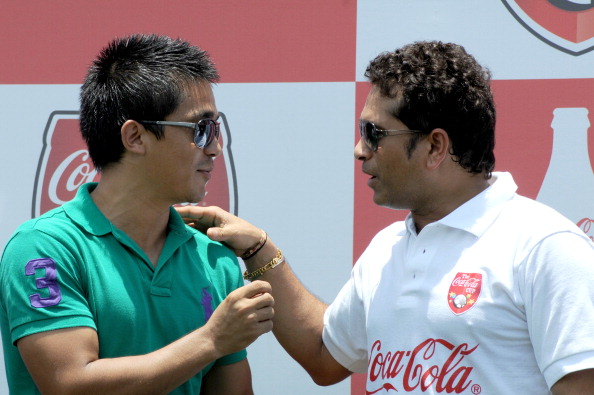Why football can never replace cricket in India
The Indian Super League created history in its inaugural season by becoming the fourth biggest league in the world in terms of attendances. The ISL effect rubbed off on I-League matches as well spurring attendances from 5909 to 8296 after just two seasons of the mega-rich league coming in.

While no one can dispute the numbers and the warm welcome that the sport has received in India, it is a stretch to even assume that the beautiful game has the smallest chance of overtaking the gentleman's game. But cricket wasn't always the attention grabber that it has gone on to become now.
Many of us weren't even born when team sports other than cricket were the main source of pride for Indians. The 1950's and 60's were the golden age of Indian football and hockey as India were ever present on the World stage. Any hockey fan in India will happily tell you that the National team won six consecutive Gold medals at the Olympics (1928-1956). Football fans have their own stories of the glory days as well. India won two(1951 & 1962) of the first four Asian games medals along with a very respectable fourth place spot in the 1956 Olympics. The AFC Asian Cup in 1964 also ended with India finishing as runners-up in a closely fought game.
However, that was the pinnacle of glory, and it has been all downhill since then. After the 1964 Japan Olympics, India
How cricket changed India's sports landscape

 © Getty
© GettyThis is when a Kapil Dev-led team changed the dynamics of how sports were viewed in India. The 1983 World Cup win made India switch their allegiance from hockey and football which were on a decline to the sport that was giving them worldwide recognition. The is where the Board of Control for Cricket in India (BCCI) turned the tables completely. The 1980's saw the rise of televisions, and the BCCI successfully made cricketers household names by using the new medium to the best of their abilities. Once the hard work of the early 80's was done, the India-Pakistan rivalry took it to the next level. While most of the world considers football to be a religion, Indian cricketers achieved the status of gods in their country.
This led to a cause and effect cycle where Indians follow the cricket and play the sport from the age when they are able to hold a bat. Thus, when the talent pool increases, it is more likely that the quality of cricketers is at an elite level. Watching these players, a new generation of superstars are inspired and the wheel just keeps turning.
The money game
Supply and demand are the foundations on which modern economics is based on. There is a huge demand for cricket in the country and the supply is even higher. In terms of the business models, Indian sports mimics America - advertisements drive the business, and football again falls short because of its continuous game-play. This is why cricket holds the key to the Indian sports industry. There are opportunities for adverts after every wicket to go along with the breaks after every over. In the Indian Premier League (IPL), it would cost a brand Rs. 5.50 lakh to Rs. 5.75 lakh on a standard definition channel for a 10 seconds slot during a group match.
The world's biggest TV rights deal is between the FA and Sky and British Telecom for the Premier League. The deal is worth a whopping £5.136 billion for just the 2016/17 season. Sky, in turn, have a long-term sponsorship deal with Ford for a premium advertising slot at the halftime show as they cannot follow the usual business models to recover their money. Football in India cannot attract such deals as they don't have the pull that both the Premier League and the IPL possess in abundance.
Club culture

 © Getty
© GettyMoreover, the concept of clubs in sport are relatively new in India, and due to its lack of international matches, football finds it hard to attract Indians to the sport. The recently concluded Kabaddi World Cup attracted 80 million viewers (I was one of them) in the first 18 matches on TV alone. National pride played a big part in getting people hooked
This is the exact opposite of how the Gentleman's game functions. In cricket, the respective national leagues are held at a time when the national teams don’t have a tournament on their hands. The major focus of cricket is to promote International cricket and leagues such as the Big Bash and IPL, no matter how exciting they are, have to take the back seat. The fanaticism of clubs is still missing from cricket as people tend to support players rather than a team like they do in the case of International matches.
T20 - the game changer

 © Getty
© GettyLastly, one of the biggest reasons for football's inability to make in big in the Indian sub-continent has been the tempo at which the game is played. For a cricket fan looking to follow football, they get put off by the long periods where the tempo is slow when compared to a T20 match. In a T20 match, a spectator will always be treated to something exciting as the game is played like a
To an untrained eye of a cricket fan, it would not be a big deal that a player has hit the ball over a large distance to his team-mate. Conversely, a football fan with no knowledge of cricket would not care that Yuvraj Singh smashed a bowler for six big ones in a row.
If India wants both sports to succeed, fans from both sides have to let go of the elitist mentality that grips each sport. Instead to trying to discourage the other sport we should encourage children to play multiple sports so that they have an option at the end of the day. India would have never had an MS Dhoni if he hadn't been playing football as a kid. Similarly, Phil Neville would never

Comments
Sign up or log in to your account to leave comments and reactions
0 Comments